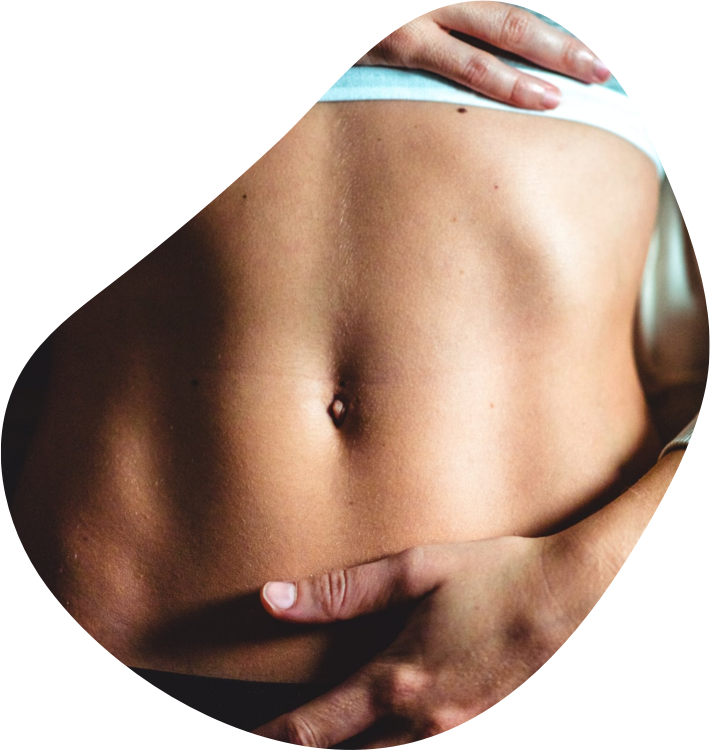LSA is a ground meal of linseeds (also known as flaxseeds), sunflower seeds and almonds. It provides good fats including omega 3 and 6 fatty acids, as well as high amounts of the nutrients iron, calcium, magnesium, and vitamin E. Adding LSA to a meal will also add a good source of protein.
It is essential to make your LSA from scratch, as the oils contained within the nuts and seeds oxidise very easily once they have been crushed. This is particularly the case for linseeds, which should only be consumed freshly crushed or as a cold pressed oil which is kept in the fridge.
Never buy pre-ground LSA or flaxseed meal, as it contains a high amount of oxidised oils which are rancid and therefore detrimental to your health.
LSA is easy to make! Try this recipe…
Equal parts of:
- Linseeds
- Sunflower Seeds
- Almonds (substitute pepitas in nut allergies)
In a mortar and pestle or coffee/spice grinder*, grind equal amounts of the above. If you do not have time to grind your LSA every time you need it you can make it in bigger batches and keep in in an airtight glass jar in the fridge for up to 3 weeks.
A good amount to have for health benefits is 2-3 tablespoons a day. Try it on muesli or porridge, mixed in yoghurt or on salads. Never use LSA in cooking, it will ruin the good oils!
*Coffee bean grinders are available from department and electrical stores.
Legumes are a great addition to the diet, being high in protein and minerals and a great source of complex carbohydrates. The legume family includes lentils, chickpeas and beans. Our naturopaths recommend eating legumes with at least 3 meals per week. Legumes are particuarly beneficial for those with digestive complaints, diabetes, heart disease and hormonal issues.
Step 1 – Soaking
All whole legumes need to be presoaked. The soaking process helps to hydrate the dried legume and remove some of the saponins (a phytochemical that causes gut irritation). As legumes differ in their size and density there are different soaking times for each, however a good guide is to soak them for at least 12 hours, or overnight.
TIP: Add some wakame to the soaking and cooking water to help to soften the legumes.
Step 2 – Rinsing
After soaking discard the water and rinse well. Put legumes in a large saucepan with plenty of water (at least three times as much water as the legumes).
Step 3 – Cooking
To cook legumes, bring to the boil then reduce heat to a low boil. Cooking times for legumes vary, with some only needing 45 minutes and others needing several hours. Use the guide below for different legume types, or cook until tender.
TIP: Don’t add salt to the cooking water! It retards the skins – add it in after cooking.
| Legume Type | Cooking Time |
|---|---|
| Adzuki beans | 50 – 60 minutes |
| Black beans | 60 – 90 minutes |
| Black eyed peas | 50 – 60 minutes |
| Borlotti beans | 45 – 60 minutes |
| Canellini beans | 45 – 60 minutes |
| Fava beans (without skin) | 50 – 60 minutes |
| Chickpeas | 2 – 3 hours |
| Kidney beanS | 1 1/2 – 2 hours |
| Brown lentils | 45 – 75 minutes |
| Green lentils | 30 – 50 minutes |
| Lima beans | 60 – 90 minutes |
| Mung beans | 60 – 75 minutes |
| Navy beans | 50 – 60 minutes |
| Pinto beans | 60 – 90 minutes |
Step 4 – Rinsing and serving
Once the legumes are soft take them off the heat and let them cool for 5 – 10 minutes. Drain and rinse well under running water.
Top legume serving tips from our naturopaths!
Legumes are very versatile to use in the diet. Because they take a while to cook our naturopaths recommend making them in large batches and then storing them in the fridge or freezer for later use. Try these yummy tips:
- Chickpea or lentil salad with chopped parsley, roast pumpkin and baby spinach
- Blend legumes with olive oil and spices for a delicious dip
- Use them in curries
- Cook them with onion and tomato and have them on toast for breakfast
- Make a soup or stew with them
Sprouts are the new shoots of plant seeds and are therefore a powerhouse of nutrients. Sprouts are a good source of vitamin A, Bs, C, K, silica and amino acids essential to health. Sprouted seeds are also very alkalising in the body – helping to reduce acidity and inflammation.
You can make sprouts out of almost anything – from wheat and buckwheat grain to lentils and beans, anything that can be planted to grow can also be sprouted and consumed for health benefits. Did we mention that they taste good too?
Just like cooking legumes, different seeds have different preparation methods. Below are some of the more commonly available things that you can sprout in your own home.
Wheat grass
Wheat grass is a great way to get a daily vitamin and mineral boost from nature. You can grow wheat grass in trays and cut off some to juice daily. You do need a juicer that will express to do this at home, but it is well worth the investment!
- To grow your own wheatgrass, use a seedling tray filled with organic soil (available from a nursery or hardware store).
- Cover the soil with organic whole wheat grains (around $4 a kilo from your health food shop) and put a piece of newspaper on top.
Soak thoroughly with water daily. - When the grains have sprouted (2-4 days) remove the newspaper and leave in a sunny position. Water daily.
- Once you cut your wheatgrass you can also use the second growth.
- If is is ready for harvest and you don’t want to use it it will last around 5 days in a plastic bag in the fridge.
Alfalfa
Alfalfa seeds can be easliy grown using any large jar. They are a great source of vitamin C and chlorophyll.
- Soak alfalfa seeds overnight in around three times as much water as seeds
- Pour the water out and rinse. Try and space the seeds out in the jar by making them stick to the sides of the jar. Avoid clumps and make sure they are moist.
- Rinse the seeds every 24 hours with fresh water – more often if you are in a warm climate. Ensure that the seeds are spaced out after each rinse
- After a day or so you should see small white sprouts. At this stage you can transfer half to another jar to give them enough room to grow if needed. Keep the sprouts in a place without too much light
- Keep rinsing every 24 hours until they have grown around 5cm (usually around 5 – 6 days). Rinse and transfer onto a plate and spread out
- Place the sprouts in sunlight for at least 15 minutes to help activate enzymes and green the leaves
- Store in the fridge in a container and enjoy in salads and on sandwiches!
Lentils
Lentil sprouts are a good source of protein, iron and vitamin C. These instructions are for green lentils but you can sprout any lentil using the same method.
- Rinse lentils to remove any debris
- Place in a bowl with 3 times as much room temperature water and soak for 10 – 12 hours
- Drain lentils and rinse well under running water. Drain thoroughly
- Spread out in a shallow container out of direct sunlight. Place a tea towel over the top of the container
- Rinse and drain every 12 hours approximately 3 times. Taste each time to see how they are going
- Once the lentil have small sprouts coming out of them they are done. Do not leave them for too long or they will become starchy
- Use in salads, stir frys, soups etc. Enjoy!
Labna is a cheese which is easily made from yoghurt. It has the benefits of containing good bacteria that is beneficial for your gut and is easier to digest than most other cheeses.
You will need:
- Muslin cloth for hanging
- Pot or bowl to catch liquid
- Probiotic yoghurt (preferably organic) –
- Jalna biodynamic is a good choice
Optional:
You can mix pepper, herbs, chilli, garlic, or anything else you might like into the yoghurt to make a flavoured labna.
Instructions:
- Place the amount of yoghurt that you wish to make into cheese onto muslin, then bunch the ends and hang to something with a bowl beneath it to catch the water (a pot with a lid can work well for this).
- Leave overnight, or until cheese has become firm and most liquid has been drained
- If you live in a warmer climate, you may need to hang it in the fridge
- Store in a sterile airtight container in the fridge
Serving suggestions:
- Rolled into small balls and tossed through a salad with baby spinach, roast pumpkin, capsicum and olive oil
- On Ryvita or a cracker of your choice with smoked salmon and cracked pepper
- As a dip mixed with avocado, paprika, garlic and lemon juice served with carrot and celery sticks


